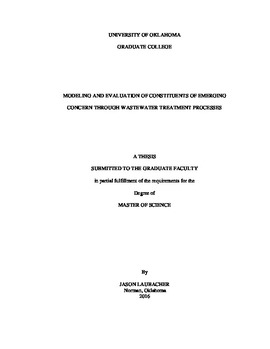| dc.description.abstract | Constituents of emerging concern (CECs) have accumulated in drinking water source supply over the past decades. Although there are currently no established treatment standards, CECs should be of concern to the public and the environment. The goal of this study was to better understand the fate of CECs in a conventional activated sludge (CAS) wastewater treatment plant. To achieve this goal, two objectives were identified: (i) evaluate unit operational changes that increase removal efficiency of CECs and (ii) evaluate the efficacy of advanced treatment options. This research measured 98 CECs throughout a CAS facility. Subsequent to these analyses, a stochastic fate model was developed to quantitatively understand CECs’ fate through CAS processes. Results of the model indicate that primary clarifiers and secondary plug flow reactors (PFRs) significantly reduced CEC concentrations. CEC removal percentages in the primary clarifiers range from 9.1% (triclosan) to 79.8% (atenolol). PFR removal percentages range from <0% (meprobamate, gemfibrozil, and sucralose) to >98.6% (caffeine) and overall plant removal percentages range from 6.7% (gemfibrozil) to >98.9% (caffeine). Even with relatively low removal percentages, some influent and effluent CEC concentrations are well below monitoring trigger thresholds, which indicate safe drinking-water concentrations. Furthermore, because wastage rate controls the mean cell residence time, wastage rate is the most influential operational control on the effect on CEC removal. In conclusion, by providing operational and advanced treatment analysis, this modeling approach can help determine key factors in CEC removal from CAS facilities. | en_US |
